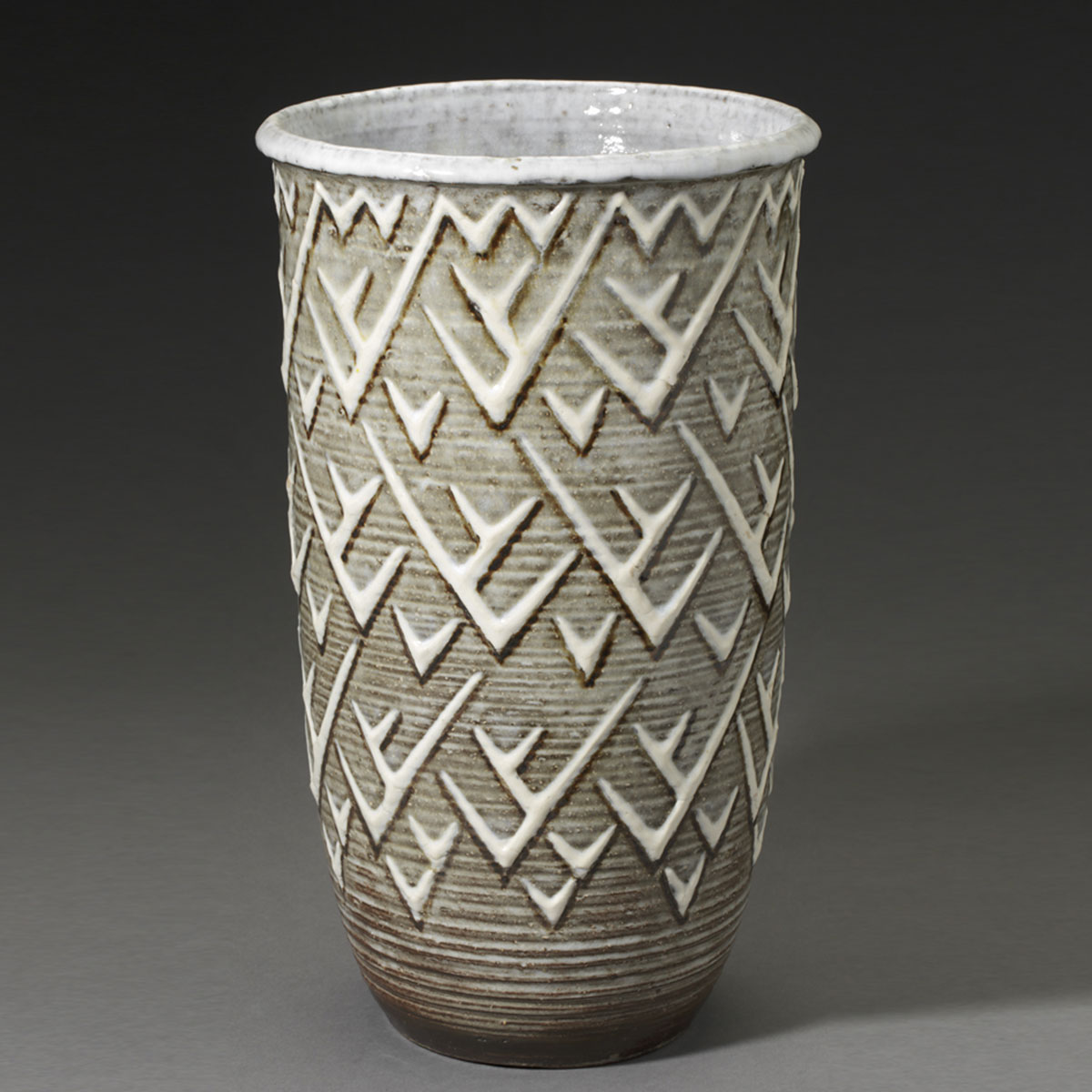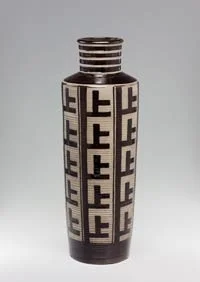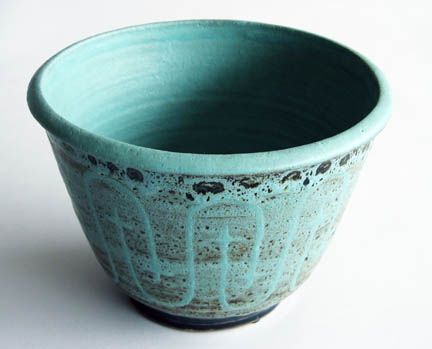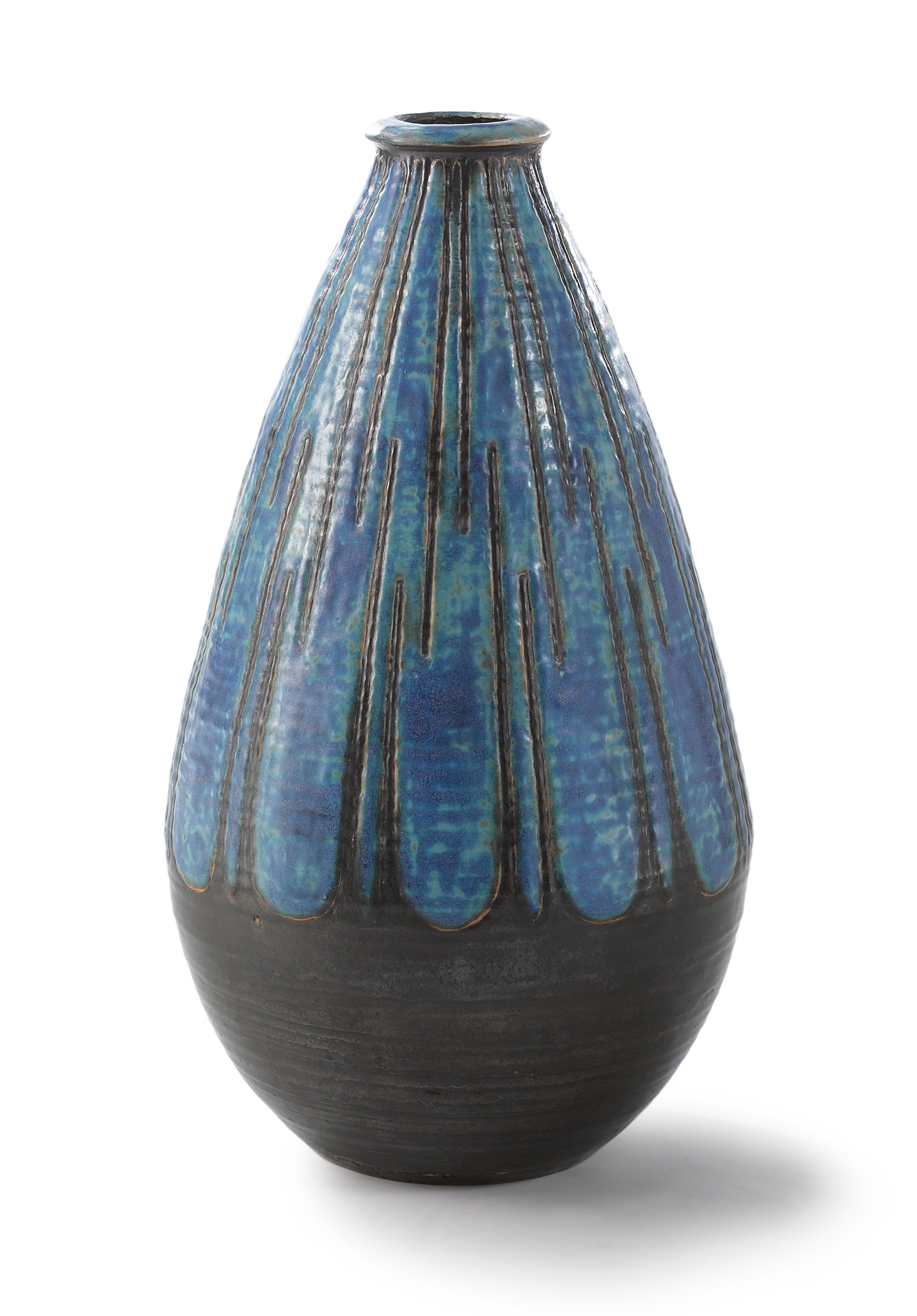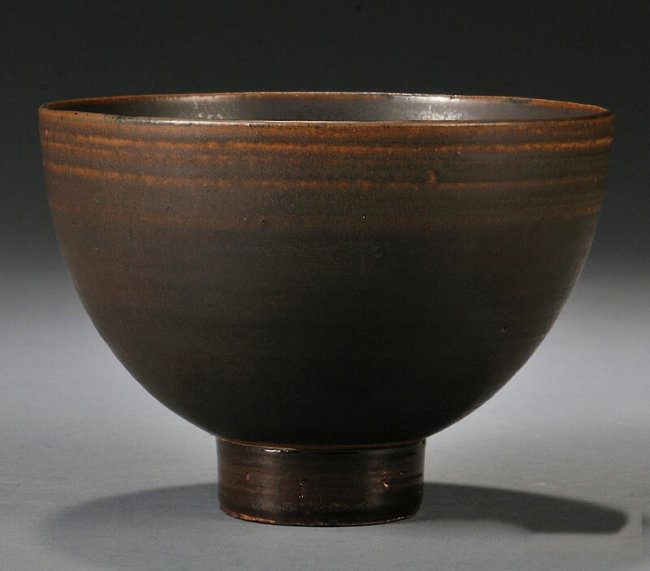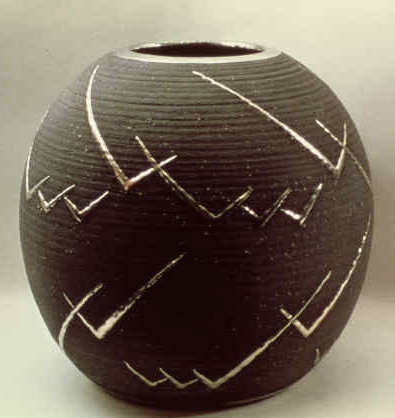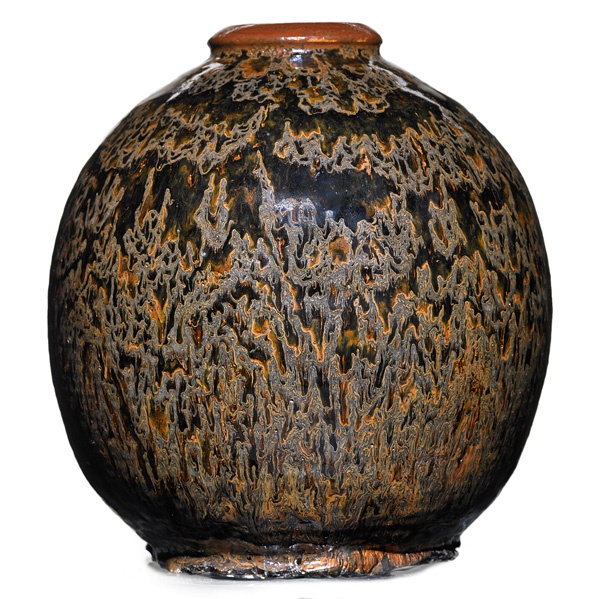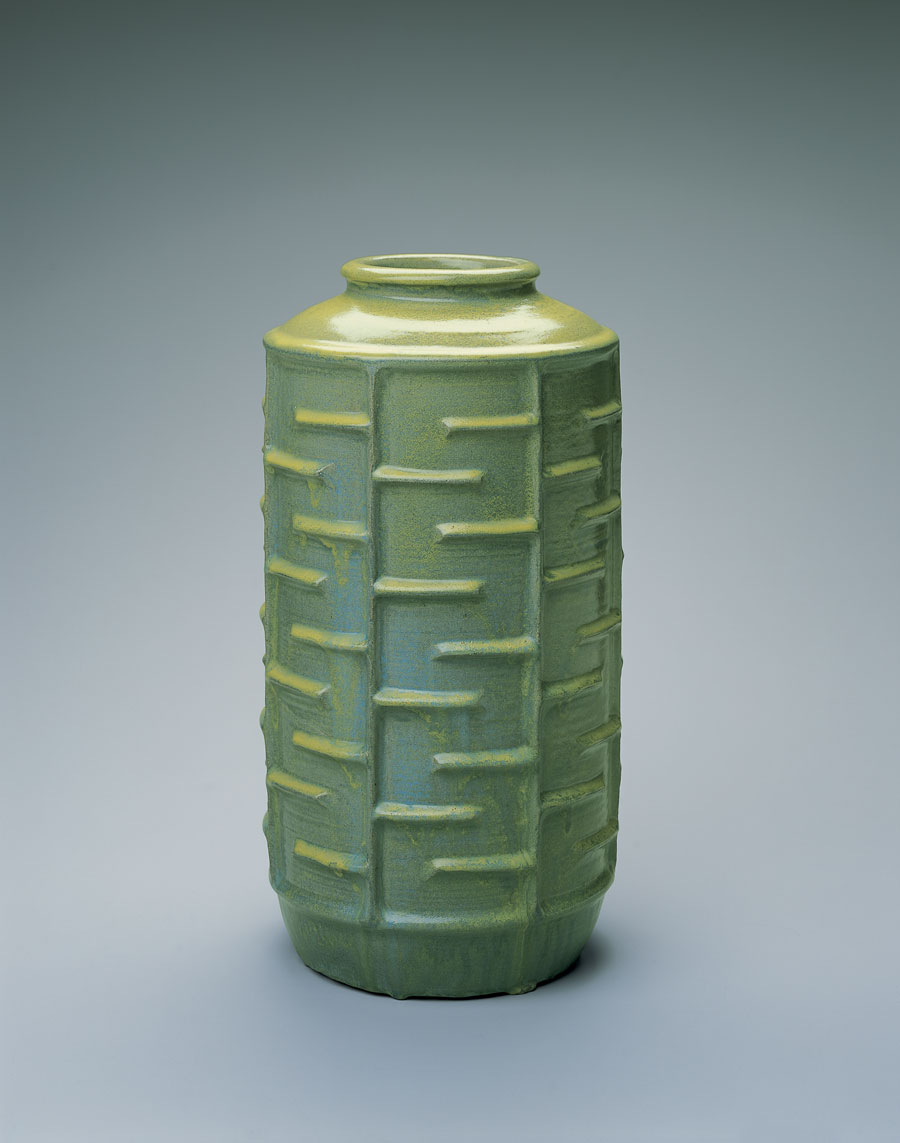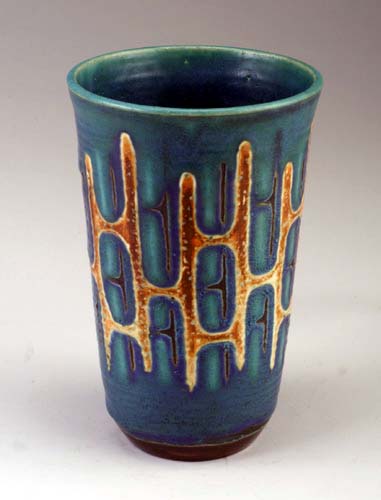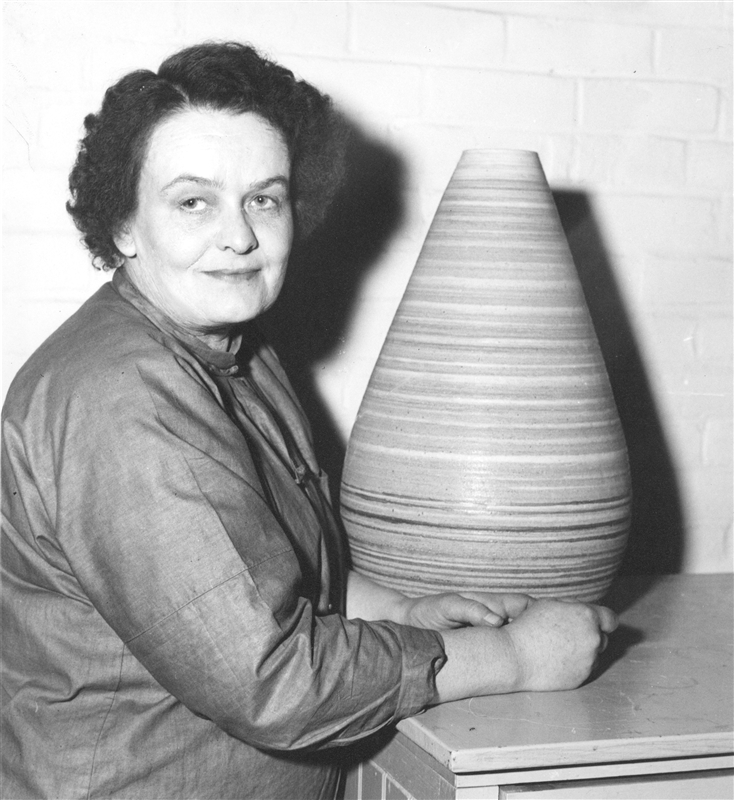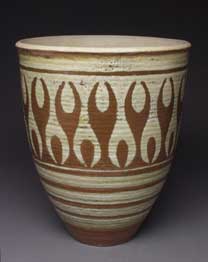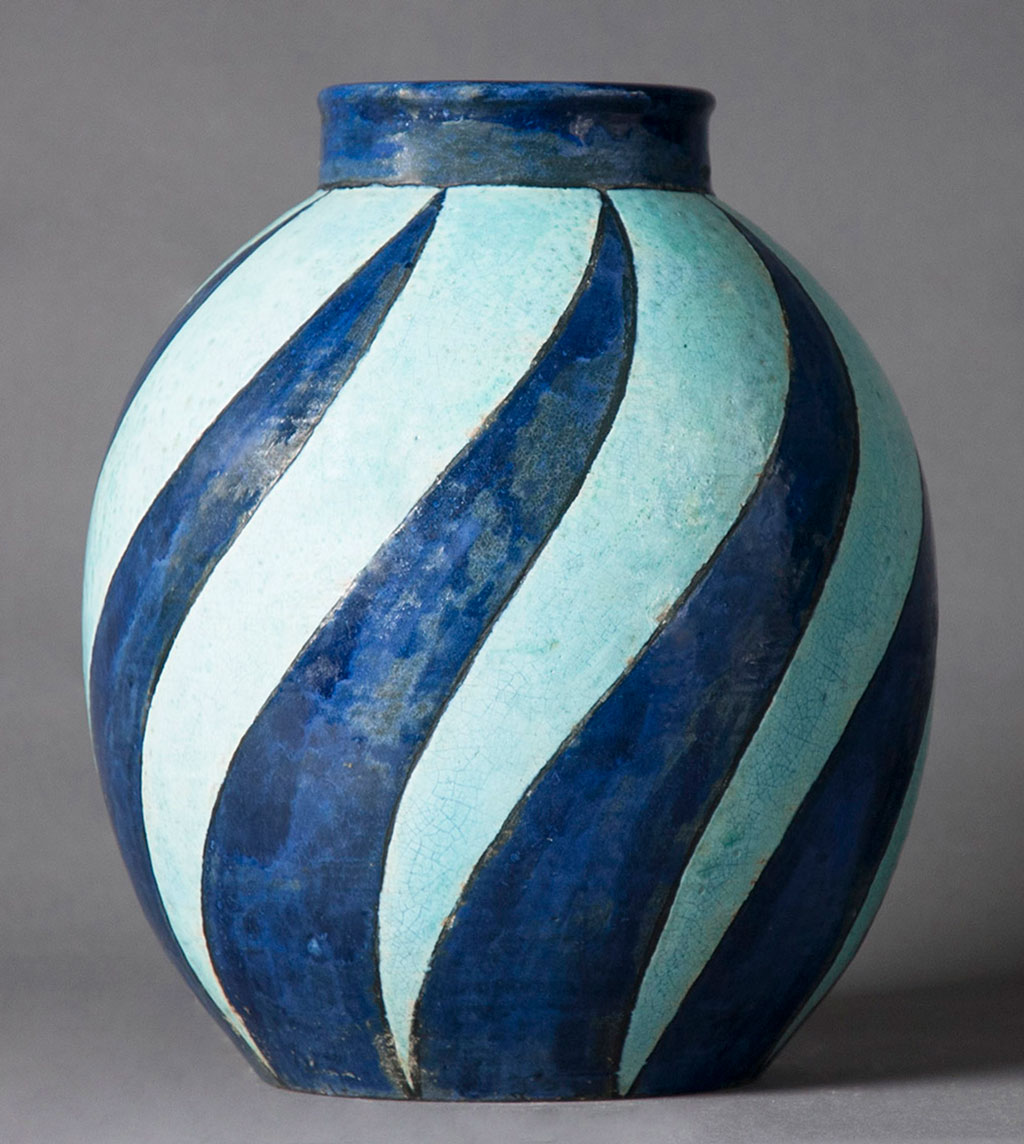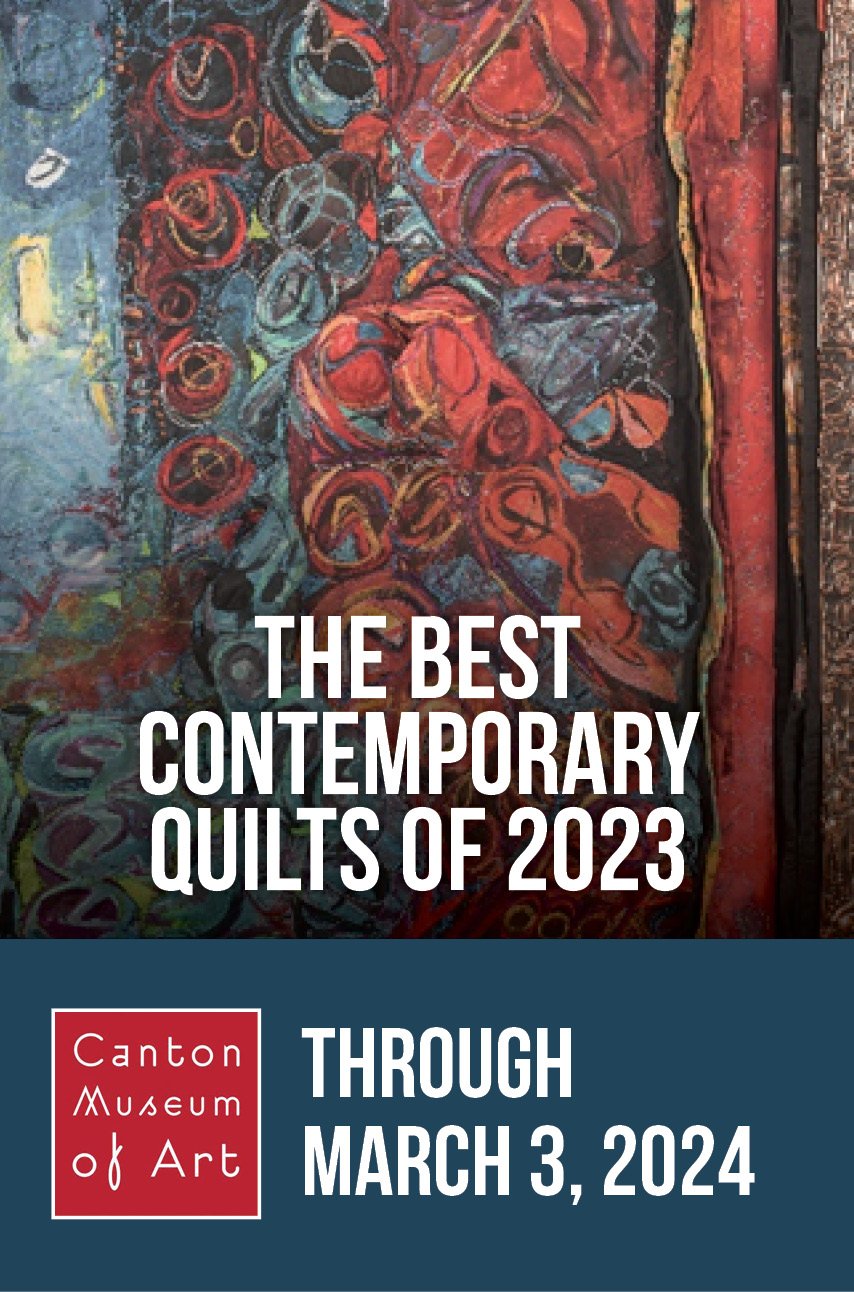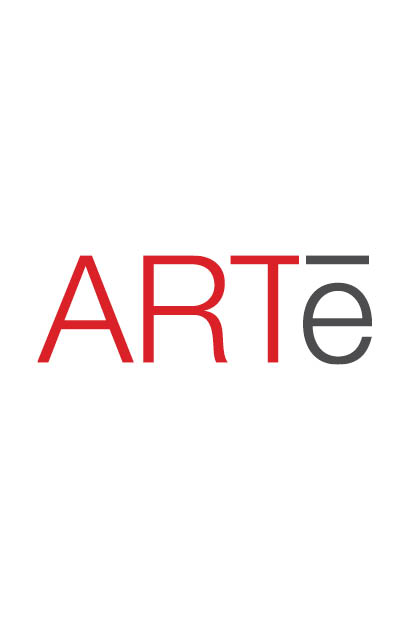Maija Grotell, American, 1899-1973
Ceramic Pot • Clay 10-1/4" x 8" x 8"
Canton Museum of Art Permanent Collection • Gift of Mrs. June Shealor-Lockhart, 82.5
There was only one professional ceramics teacher in all of Finland in the 1920’s. Not an ideal situation for an artistic young girl in love with making pottery. Maija Grotell was the athletic daughter of an artistic mother. At the Ateneum, the only art school in Helsinki, teachers who loved her mother’s Renaissance style sculpture and wood carvings, were not at all fond of young Maija’s first attempts at pottery. Only Professor A.W. Finch was supportive. Of course, he only had two students.
Working virtually alone, young Maija developed a style built on layering glazes one atop another, much like a pearl is formed with layer upon layer of nacre. It wasn’t functional pottery or ceramic sculpture, but a new kind of fine art pottery.
Soon Maija came to understand Europe’s limited professional possibilities. The only open door appeared to be America. And, the only place she knew of in America was New York City. At first she resisted, strongly considering a position in England arranged by Professor Finch, but she couldn’t secure the necessary government invitation.
So, for an entire year, she studied maps of Manhattan and subway guides, until she knew the streets of the city better than a taxi driver. Then she set sail at the age of 28.
INTERESTING STORIES FROM OUR SPONSORS

After just three days in New York she had a job at the Inwood Studios making native American Indian pottery and teaching ceramics. She well-remembered her first New York City, Prohibition-era cocktail party at the Hotel New Yorker. She came expecting fruit cocktails and was surprised by the drinks brought in little glasses.
For eleven years she moved from studio to studio in New York, always adding layers to her life and her work. Finally, she became an instructor and researcher at Rutgers University in New Jersey before being asked to head the ceramics department at Cranbrook Academy of Art in Bloomfield Hills, Michigan.
Cranbrook was one of two leading ceramics programs in America, although, at the time, their kiln and facilities were rudimentary. A professor at Rutgers, was upset she was leaving and told her, “But, you’ll have to make your own glazes!” To which Grotell replied, “But, that’s what I’m interested in!”
The young athletic girl who dove for pearls in the rivers of her youth had become one, herself. But, she hadn’t yet learned to shine.
In 1938 Maija Grotell arrived at Cranbrook Academy of Art and met the star professor, famed architect, Eliel Saarinen. With their Scandinavian heritage and minimalistic design tendencies, Grotell and Saarinen formed a creative bond. More important, Saarinen became her protector as the last shining layers were added to her life and work. Once a man tried to order a dozen bowls from the school, and became furious when Grotell said she hadn’t time to take the order. The school became concerned and sent Saarinen to talk some sense into her. Upon hearing Grotell’s worries about mass production techniques, Saarinen turned to the man and proclaimed, “She’s right. Go off.”
Maija Grotell came to Cranbrook a respected potter and teacher. She stayed for 28 years, conducting increasingly sophisticated glaze experiments and passing her knowledge on, layer by layer, to a growing number of ceramic students. By the time of her retirement in 1966, she was revered at the “Mother of American Ceramics.”
In May, 1968, she sat in a sunlit room of her Michigan apartment with her former student, famed ceramicist Toshiko Takaezu. “Most of my pieces are one layer on top of another layer. And how I started with that I remember. In Finland I had a genuine pearl in a ring — a pearl that I had been diving for myself and found. I thought that it was non-destructible, very strong.”
Maija Grotell was a pearl made of clay.
NOTE: Many facts taken from Jeff Schlanger & Toshiko Takaezu’s book, “Maija Grotell. Works Which Grow from Belief.”
4 Ways to Sound Smart When Viewing at The Canton Museum of Art
1.
“The secret to her art was the painstaking layering of glazes to create interesting effects.”
2.
“Beyond the beauty of her work, her greatest contribution to the ceramic arts was her extensive research into glazes.”
3.
“According to a friend, she used to enjoy sitting on a bench in Battery Park gazing across the Narrows toward Finland, and thinking of the water touching both shores.”
4.
“According to biographer Jeff Schlanger, ‘She was one of the few modern artists — Brancusi, Mondrian, Gaudi — who lived a life in such a dedicated way as to be able to create a culture of Belief.’”
Maija Grotell Timeline. Scroll over images to see timeline.
